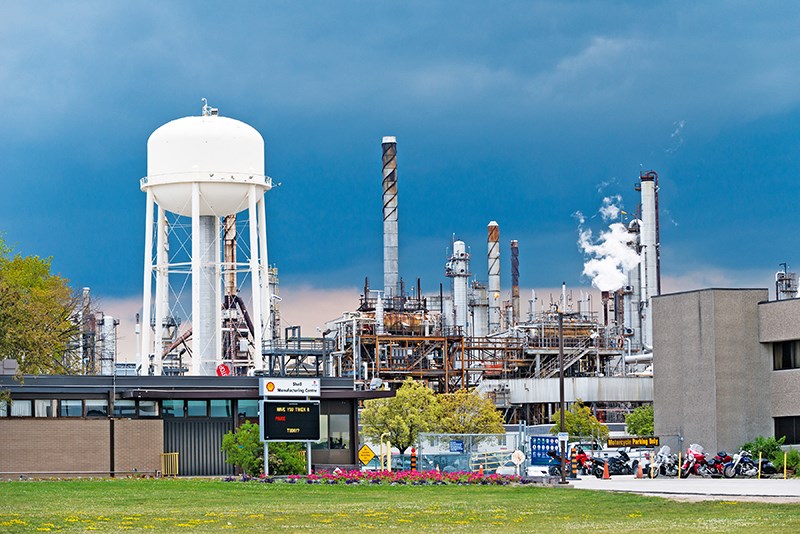Troy Shantz and George Mathewson
Sarnia’s mayor says a collaborative media investigation of the Chemical Valley did not accurately or fairly describe what is happening in the city or local industry.
“I made it quite clear I felt this was a rehash, a recycling of old news,” Mike Bradley said.
“It was like Groundhog Day all over again.”
The mayor was responding to a investigative report by Global News, the Toronto Star, National Observer and several Canadian journalism schools that looked into more than 500 incident reports and raised serious concerns about government oversight of industry.
It described how the city’s emergency warning system has been used only once to inform residents of releases since 2014, and how Aamjiwnaang First Nation residents are directly impacted by the oil refineries and petrochemical plants that surround the reserve.
Bradley, who said he refused to participate for fear of “feeding the beast,” said the expose had a predetermined bias and failed to mention real improvements made in local air and water quality.
“And that bias has been there from the very second they first made contact back in July,” he said. “To me, they were talking about the old Sarnia.”
Nevertheless, the black eye received nationally will be worth it if it revives a long-stalled comprehensive study into the impact of industrial emissions on human health, he said.
“If we’d gotten more support from the province and the federal government that health study would have been completed by now,” the mayor said.
Environment Minister Chris Ballard said after the report aired earlier this week Ontario is now committed to funding the health study but provided no details.
And the federal government responded by saying it plans to toughen environment laws.
The report was based in part on a video diary by Ada Lockridge, an Indigenous activist and resident of Aamjiwnaang. She said the print and TV documentary hit the nail on the head.
Lockridge has for more than a decade personally monitored air quality on the reserve and is convinced ongoing industrial emissions are directly impacting residents.
“As soon as you hear somebody is sick it’s like, ‘What kind of cancer do they have?’” she asked. “That’s almost your first thought.”
Lockridge has been attending meetings with government and industry officials for years and hopes the national media exposure will finally bring about real change for the community.
And while she welcomes the province’s new commitment to a health study, she fears the polluters will have undue influence on it.
“Industry always says that they only do what government tells them what to do,” she said with a laugh. “But industry tells government what to do.”
The collaborative report on Sarnia, which used headlines such as “Canada’s Toxic Secret,” was one part in a 13-part series called The Price of Oil.
Sarnia councillor Brian White, who was interviewed for the report, was criticized for his participation on social media by some who said he helped attack the very industry on which the city’s economic livelihood depends.
White said while the report did present a narrow view of Sarnia it was important to participate, adding the voices of workers and Aamjiwnaang residents need to be heard.
“I think it’s unfair to dismiss the concerns of the people who think their health is being gravely affected. They are on the front lines, they are the ones … completely surrounded by industry,” he said.
Others, including Ontario’s Environment Minister, pointed out Sarnia’s air quality has steadily improved over the past 10 years, something glossed over in the report.
Data collected at 11 local monitoring stations – including one on Aamjiwnaang – show substantial reductions in emissions of sulphur dioxide (64%), nitrogen dioxide (23%) and fine particulate matter (43%).
Levels of benzene in Sarnia — a focus of the documentary — have greatly decreased compared to what they were in the early 1990s.
And leukemia and blood cancer rates are no higher in Sarnia-Lambton than the rest of Ontario, according to health statistics.
Dean Edwardson, of the industry-funded Sarnia-Lambton Environmental Association, said 500 reported “spills’ does sound bad.
But most were minor in nature – “You might have a more serious spill in your driveway from your truck.” — and posed no risk to the environment, he said.
“I don’t think it accurately represented what’s really happening here in Sarnia.”
